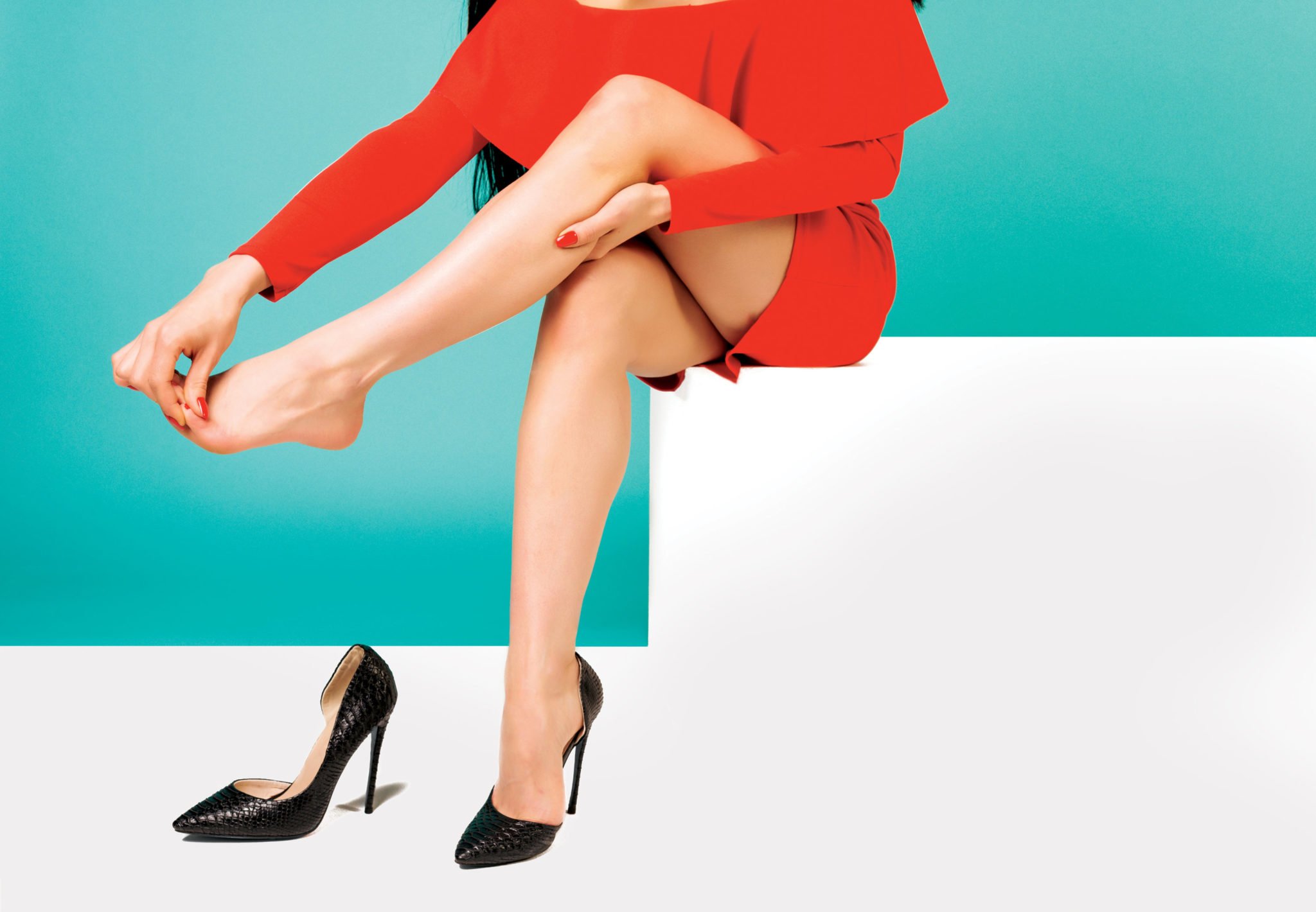Remember when you wore actual shoes? Like, to an actual office? For a lot of us, it’s been a while. Which means America’s impending return to a more traditional workplace—especially the kind whose denizens gravitate toward sensible loafers or office-appropriate heels—could be hard on the feet.
“If you haven’t exercised or done a bicep curl in six months and you pick up a weight and you do 20 curls—it’s the same thing for the foot,” says Timothy Swartz, a Kaiser Permanente podiatrist. “The foot isn’t accustomed to [being in dress shoes] because of being at home and being in slippers. It’s going to be introduced to a new environment, and it’s going to create some overuse symptoms that are going to create foot pain.”
Shoes aside, if you’ve been mostly sedentary during the pandemic, you might also see side effects if your job requires a lot of time on your feet, says Amir Assili of Shady Grove Podiatry: “[If] all of a sudden somebody who hasn’t been doing a lot goes back to work and their job requires a lot of standing and walking and they’re not prepared for it, that can cause a stress fracture.”
So what can you do to reduce the likelihood of post-pandemic hobbling? We asked podiatrists to share their rules of toe . . . er, thumb.
Make sure you have proper-fitting, supportive work shoes.
If you haven’t worn dress shoes in a while and are buying new ones, you should measure your feet beforehand, because shoe size can fluctuate over time. And for those whose feet are especially sensitive, it may not be a bad idea to see a pedorthist—that is, a credentialed shoe-fitter—especially if you suffer from issues such as bunions or plantar fasciitis. Assili recommends Jo’s Comfort Zone in Gaithersburg or RnJ Sports, with locations in Rockville and Bethesda.
For support, Swartz suggests opting for a shoe with a stiff sole (you shouldn’t be able to easily bend your shoe in half), with a flexible upper area covering your toes, heels, and the top of your feet to minimize pressure and rubbing. “It doesn’t take more than a couple hours for an ill-fitting shoe to create something that could give you foot pain,” says Swartz, who adds that this can lead to issues with your knees, back, and hips.
Start easing back into your routine ahead of time.
“You don’t want to go from zero to 60,” says Swartz. Before returning to the office, reintroduce your feet to dress-shoe life by wearing your heels or loafers around the house for a few hours. Same with walking, says Assili: If you commute to your job by foot, make sure you prepare by adding some strolls to your daily schedule.
When your feet aren’t in dress shoes, try to resist spending a lot of time barefoot, instead choosing a house shoe with good arch support. Assili recommends Birkenstocks, Oofos, or FitFlops.
Take care of your body.
When you return to work, make sure you’re giving your feet a break, says Swartz. If you use a standing desk or your job requires you to be upright a lot, sit down every few hours—and, if you can, take off your shoes.
For those who can abide the ignominy, Swartz also suggests ditching the four-inch heels for the Metro ride. Put them in your bag and join that much-maligned tribe who don sneakers for their commute. Fashionable types may mock, but your feet will feel better than theirs.
While you’re readjusting to the office, it’s probably not the best time for strenuous lower-body workouts, Swartz says. Maybe give the treadmill and your feet a rest for a few days and focus on upper body instead.
Also helpful: Before walking, incorporate moves such as a runner’s stretch or ankle circles if you’ve been sitting for long periods, says Swartz. For inspiration, Assili recommends looking up Achilles or plantar-fascia stretches on YouTube.
Keep your eye out for signs of irritation.
If your feet are swollen or blistered or you notice pressure points or redness that wasn’t there before, it could be a sign your feet aren’t happy.
“A lot of people have a notion that foot pain is just normal and it’s just going to go away,” Swartz says. “Sometimes that’s the case, but a lot of times it’s a sign of something going on.”
This article appears in the August 2021 issue of Washingtonian.




















